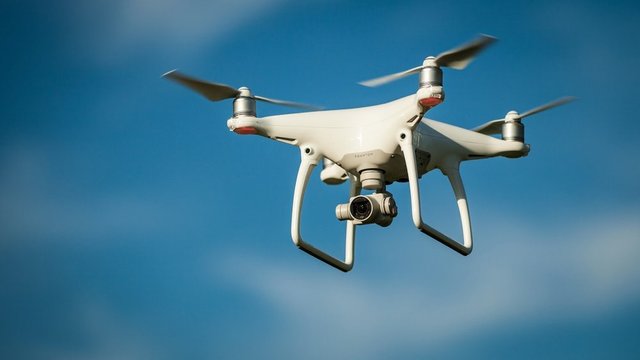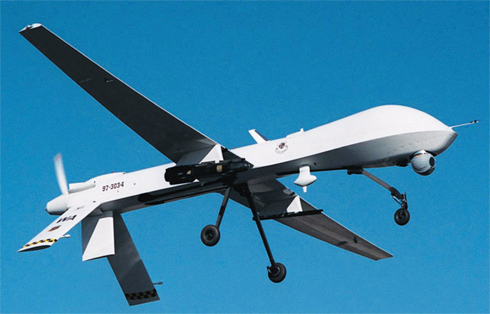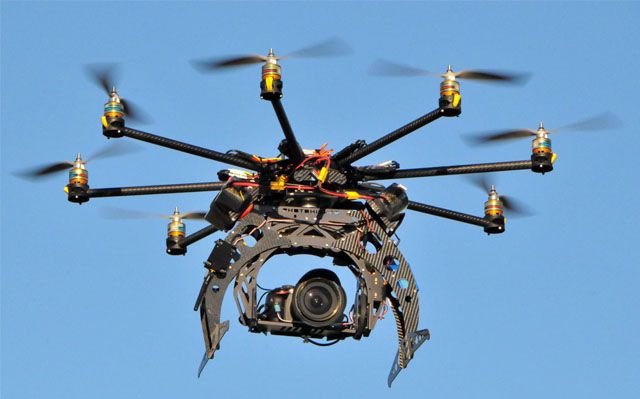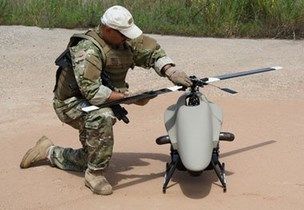DRONES UNMANNED AERIAL VEHICLE.
A drone is an unmanned aerial vehicle, which is why it can also be called a VANT abbreviation of an unmanned aerial vehicle in Spanish. The word drone comes from English whose literal translation is "drone". It can be called drone or drone.

The drones can be controlled by pilots from the ground or increasingly, autonomously after a pre-programmed mission.
As an aerial vehicle, it can have different shapes, either airplane type, helicopter type or even very different forms.
The use of unmanned aircraft has grown rapidly in recent years, because unlike manned aircraft, drones can remain in the air for many hours (a British Zephyr drone under development has just broken the world record at fly more than 82 hours without stops); and they are much cheaper than military aircraft and fly remotely, so there is no danger to the flight crew.
Drones today not only have a military use, they are also used in a wide range of civilian functions such as search and rescue, surveillance, traffic control, climate control and firefighting. In addition, there are personal and business drones to take pictures and videos from the air, and there are already some drones for delivery services (Amazon already has its own).
But the drones are not new, the oldest drone example was developed after the first world war, and was used during the Second World War to train the operators of anti-aircraft guns, for that reason it was called "Air White". However, it is not until much later than the end of the twentieth century when drones operate by radio control with all the characteristics of autonomy.
Some have a GPS system that allows them to return to the point where they started their flight. In the future it is expected that drones fly alone, making their own decisions, avoiding colliding with people and being able to avoid objects.
Most drones are operated with radio control, but can also be managed and programmed using a tablet or smartphone to program your trip through software (programs).
As we said, they are used for multiple tasks, but with the passage of time, new ways of using drones are discovered.
Types of Drones
The classification is very broad, but the first classification could be based on the type of wings.
- Fixed Wing Drones: They have fixed wings and are similar to an airplane.

Source
- MultiRotor Drones: They are usually quadrocopters (4 rotors with propellers) although there are 6 (hexacopter) or even 8 propellers. Two propellers rotate in a clockwise direction and the other two in the other direction, thus creating the pushing force necessary to bring the drone up. They can be kept in the same place without several positions, thanks to their gyroscopes and stabilizers, which is perfect for taking pictures and videos.

According to the control method we have:
Autonomous: The drone does not need a human pilot to control it from the ground. It is guided by its own integrated systems and sensors.
Monitoring: In this case if you need the figure of a human technician. The job of this person is to provide information and control the drone's feedback. The drone directs its own flight plan and the technician, despite not being able to control the controls directly, can decide what action to take.
Supervised: An operator pilots the drone, although it can perform some tasks autonomously.
Preprogrammed: The drone follows a flight plan previously designed and has no means of changing it to adapt to possible changes.
Remotely controlled (R / C): The drone is piloted directly by a technician through a console.
Depending on their use they can be:
- Military Drones: they are called UCAV that comes from the English Unmanned Combat Air Vehicle, translated into Spanish would be unmanned aerial combat vehicles. They tend to be armed and capable of bombing.

Source
Civil Drones are those drones that have no military use. In turn, they can be
For commercial use: such as cartographies, photographs, videos, etc.
For Amateurs: They are used as a toy and usually have quite cheap prices.
For Government Use: Used for firefighters, rescue forces, etc. in order to help reconnaissance, rescue, border and even fiscal tasks.
Regulations for Drones Management
The regulations define the requirements according to the weight of the aircraft manned by remote control and establish the obligations that pilots and the companies that use them must comply with.
A distinction is made between drones over 25 kg and those under 25 kg and the conditions to be a professional operator of this type of equipment in Spain can be seen in this link: Drones Regulation